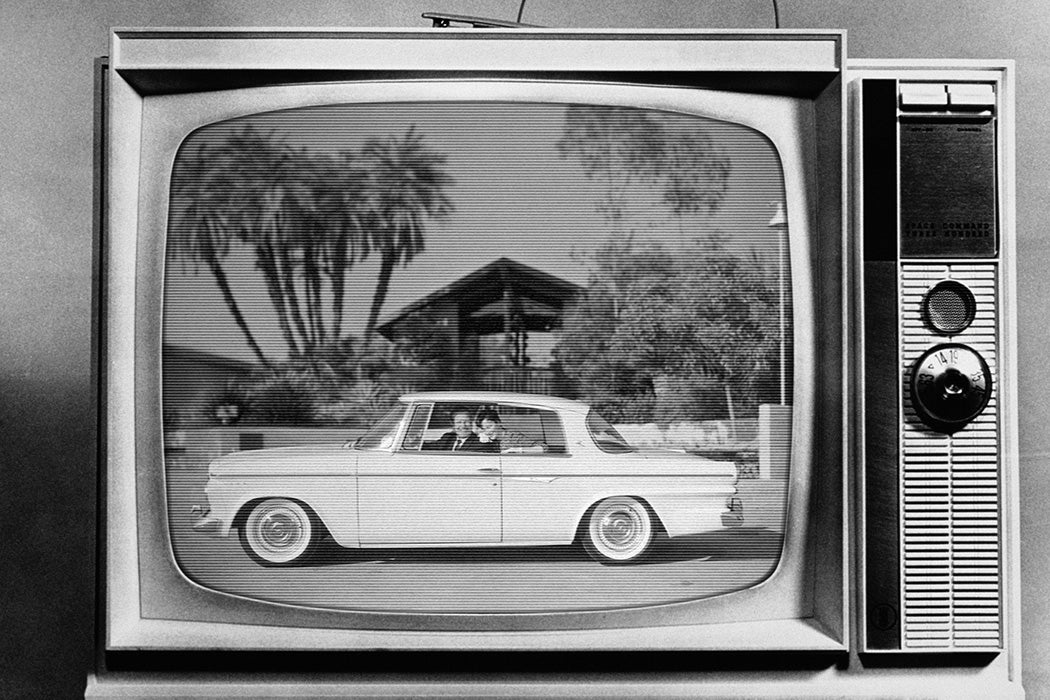The dramatic shift from city centers to suburbs in the decades after World War II wasn’t just a matter of lengthening commutes and green lawns. As historian Michan Andrew Connor writes, it represented a changing culture that was both spurred by and reflected in television programming.
Connor focuses on the Los Angeles area in the 1950s and ’60s—a time when Southern California suburbs were growing dramatically. In the early part of this period, local TV stations viewed themselves as institutions serving a community that naturally centered on LA itself. One key early example was the KTLA show The City at Night, which ran from 1950 to 1960, winning numerous awards for its “public service” and “educational” content. Using new remote camera technology, the show broadcast live from locations around LA. Episodes covered topics from circuses to the Los Angeles Braille Institute. Even as the region was suburbanizing, the show reflected an appreciation for urban excitement and sophistication.
“The show’s efforts to represent a common community for the vast metropolis reflected a utopian value held by television executives nationwide for building community across geographical distance,” Connor writes.
By 1960, evening TV viewers were increasingly passing up The City at Night in favor of national network shows, much to the consternation of critics who saw this as a dumbing down of the medium. But the urban documentary format remained alive on daytime TV. On the Go, which premiered on the CBS network in 1959, covered topics from the Bracero program to a racially mixed beatnik hang-out near Venice Beach. Host Jack Linkletter said he envisioned his ideal viewer, a suburban housewife, as a curious person interested in seeing different parts of the world from the confines of her home. As a national show, On the Go ended up covering happenings around the country, but its first season focused largely on urban LA.
Weekly Newsletter
Connor identifies an abrupt shift in the 1960s from shows like The City at Night and On the Go to a kind of magazine program epitomized by Ralph Story’s Los Angeles. Broadcast on local CBS affiliate KNXT from 1964 to 1970, the show had a folksy feel. For example, in a short, man-on-the-street segment, white people in suburban settings described their embarrassing moments. Story characterized this “honest emotion” as the opposite of urban sophistication, more like something you might find “in Iowa.”
“The segment, though slight, made a strong rhetorical point—that Greater Los Angeles’s best face was that of its suburbanites, whose warmth and humility had more in common with the idealized Midwest than with the coasts,” Connor writes. Even an episode celebrating LA’s Little Tokyo, which noted how Japanese cuisine contributed to the city’s sophistication, took pains to note that the Japanese Americans who ran businesses in the neighborhood were “not prisoners of the urban jungle,” but commuted to the city from suburban homes.
Connor argues that television’s shift in focus reflected changing audience perspectives but also a decline in TV station’s earlier “mission of representing a civic identity.”







